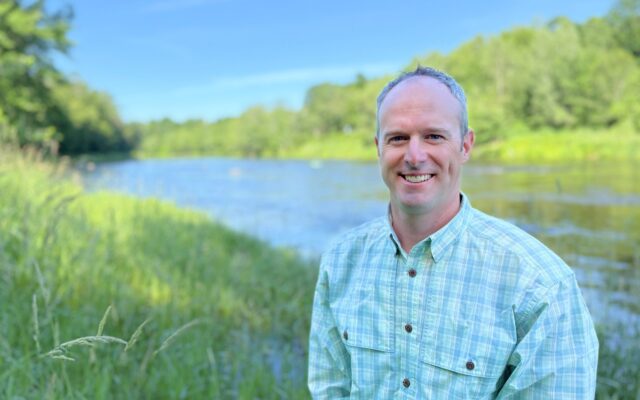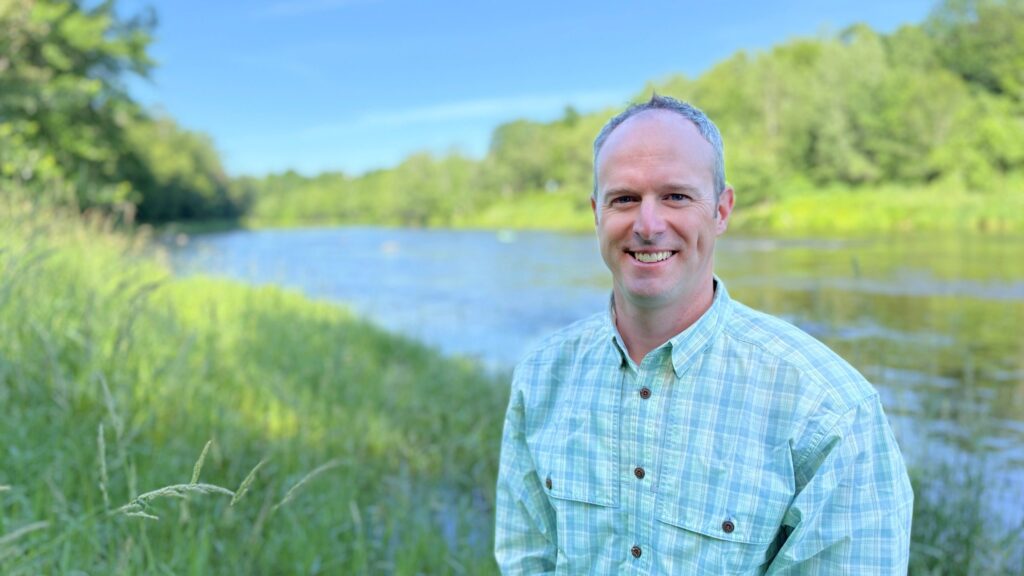
The fight to save Atlantic salmon: A conversation with new advocacy leader
By Susan Bard, Bangor Daily News Staff
The Atlantic Salmon Federation recently named Nathan Wilbur as its next president.
The organization conducts research on wild salmon throughout the North Atlantic, carries out river restoration projects and advocates for legislation to conserve salmon. Its work covers the entire salmon range in North America — from Maine to Northern Labrador, including five eastern provinces.
Here in Maine, the “king of fish” historically had spectacular returns, with more than 100,000 adults in the Penobscot and its tributaries alone. Today, this number is less than 2,000, and in recent years, Atlantic salmon have only returned to 11 rivers in Maine.
I’ve heard stories from people who grew up fishing for Atlantic salmon in Maine, the reverence for their fight and athleticism. As a passionate angler myself, I’ve fished for sockeye, coho and landlocked salmon, but I’ve always wondered what it’d be like to hook an Atlantic.

FEDERATION PRESIDENT — Nathan Wilbur was recently announced as Atlantic Salmon Federation’s new president.
I had a chance to ask Wilbur about his plans for Maine’s salmon fishery. The federation’s efforts in Maine include restoring freshwater habitat, monitoring and understanding salmon survival at sea, advocating for protective policies and educating communities.
At the top of the list is “opening habitat for salmon, removing barriers and improving access,” he said. In other words, removing dams and improving fish passage. He noted the success on the Penobscot River, where dam removals such as the Great Works and Veazie dams have led to dramatic increases in sea-run fish populations.
“Alewives had become basically non-existent, but now more than 5 million fish enter the river each year,” he said. Restoring the free-flowing river has allowed for the natural migration of fish, including Atlantic salmon, sturgeon and shad, back to their historic spawning grounds.
Other river systems in Maine are getting attention, such as the Mayo Mill dam in Dover-Foxcroft on Piscataquis River, which is slated for removal.
“Upstream from the Mayo Dam, the Appalachian Mountain Club is helping restore habitat in the headwaters where there’s lots of good, cold water,” he said. Their conservation efforts along the Pleasant River have allowed Atlantic salmon to return to native spawning grounds in headwater streams of the West Branch for the first time in almost two centuries.
When asked how the organization plans to balance habitat restoration with dam removal initiatives, Wilbur said it would focus on as much restoration and removal as possible. But “the priority is dam removal — taking out as many as possible.”
Dam removal in Maine involves complex environmental, economic and social trade-offs that have created significant controversy over the years. Removal initiatives center around fish passage restoration — particularly for Atlantic salmon. Erosion, costs and hydropower owners are some factors that limit these efforts.
I asked Wilbur about what research needs can be addressed to better protect Atlantic salmon — which is what really piques my interest. The broader decline in Atlantic salmon populations has been documented over the last five decades, but modern electronic tracking only began in the early 2000s.
“Marine salmon survival has been really low since the early 1990s. Atlantic salmon have been tracked to Greenland and back, so where they go and what they do is well documented, but there’s still a huge gap about what happens to them at sea,” Wilbur said. “There’s also the north-south gradient, where the farther north you go, the healthier the fish are.”
Other research gaps include “opportunities to protect the landscape and include buffer zones,” he said. This means protecting the entire watershed and maintaining the complex web of land and water interactions that healthy salmon populations need to thrive.
In 2022 the Atlantic Salmon Federation launched a new initiative ‘Wild Salmon Watersheds’ which will help Canada achieve its goal of protecting 30 percent of Canada’s land and freshwater resources and 30 percent of its territorial seas by 2030.
The federation aims to establish 30 wild salmon watersheds distributed throughout Eastern Canada by 2050. This is part of its broader conservation strategy to restore wild Atlantic salmon populations across the Maritime provinces and eastern Quebec.
When asked how they plan to measure success, he said, “by the number of adult salmon returning to North American rivers” The median estimate of adult Atlantic salmon returns to North America is 668,600. “We’d like to see this number reach 1 million,” he said.